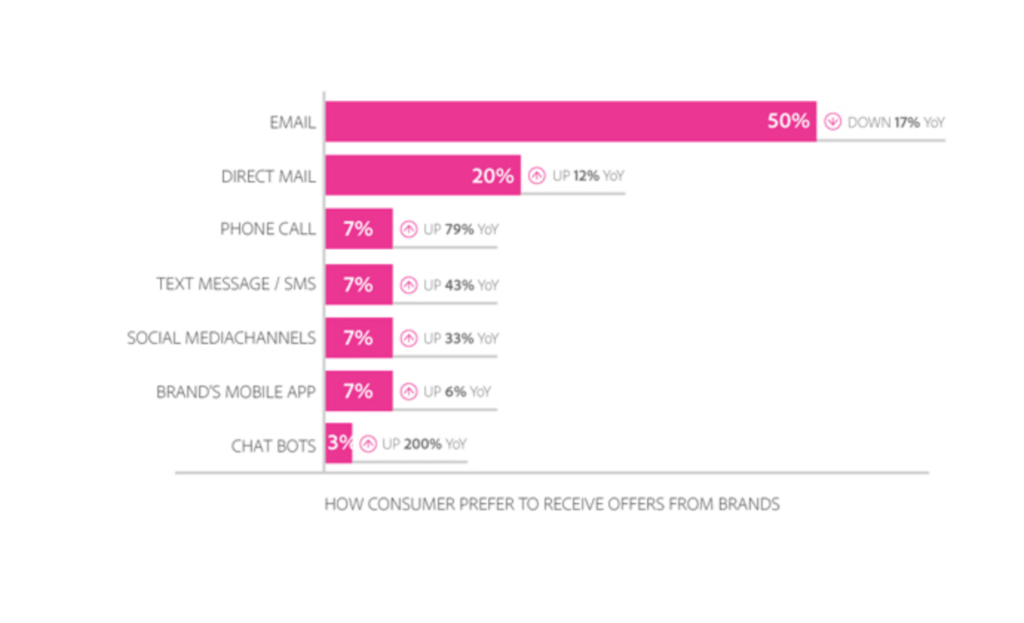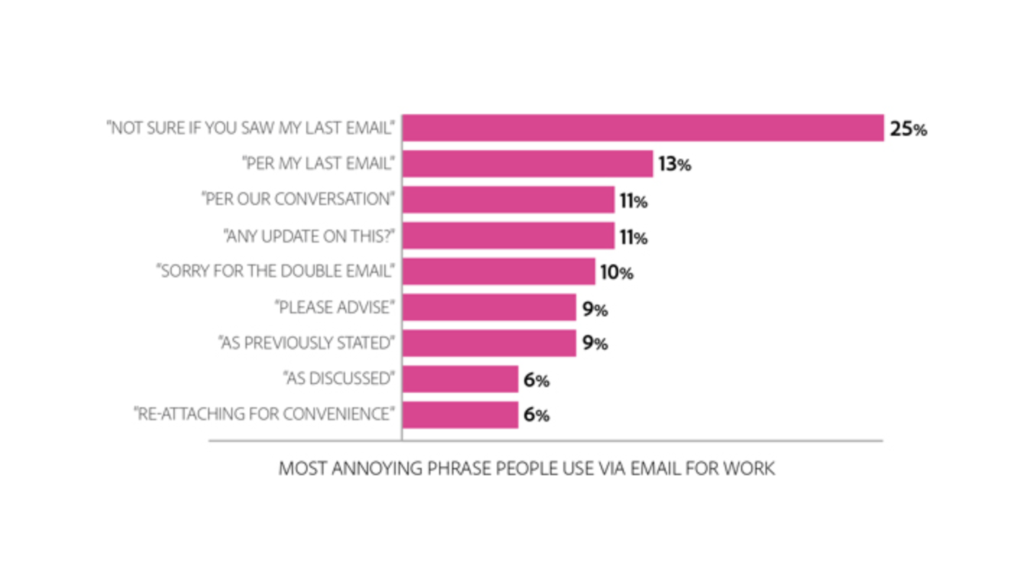Widespread as email use may be, we still haven’t grasped when or how to best approach this workplace communication tool.
Love them or loathe them, emails play a significant part in our daily working lives (well, for now at least). While email usage is down by 17 per cent, according to a new Adobe report, it is still the preferred method of workplace communication (50 per cent), with chat bots at the other end of the spectrum at 3 per cent.
But even though has been our dominant form of work communication for many years, we still haven’t entirely figured them out. Should we be paid for answering them away from work? What phrases should we be avoiding? And what should we do if we accidentally misuse our organisational account?
Graph courtesy of Adobe
Communicating on the commute
The time it takes to commute to and from work has been increasingly used to send work emails, says a new UK study from the University of the West of England. With wifi now readily available on the London underground system, researchers tabulated the online use of 5000 passengers. They found that 54 per cent of those surveyed are using it to send work emails – essentially extending the working day. Many of the participants say this extra time provides a “buffer” or “transition” to ease in and out of the day, but researcher Dr Juliet Jain questions whether that time should count towards working hours.
“How do we count that time? Do workplace cultures need to change?” asks Jain. She suggests that including commuter comms as part of the working day could have the added bonus of “ease[ing] commuter pressure on peak hours”.
Of course, employers would want and be entitled to know how that time was being spent, with Jain conceding: “more surveillance and accountability” would be the result of such a policy.
But if you think this is a far-off concept, think again. The researchers did some comparisons with Scandinavian countries and found that in some parts of Norway travel time is already counted as part of the working day.
You can’t say that!
It may seem like common sense that work email accounts are ultimately controlled by your employer. But how clearly has this message been communicated to your organisation’s employees and who should be granted access? And for employees, what should happen if they send something embarrassing?
Outback Queensland mayor Geoff Morton was left red-faced recently after accidentally sending nude photos of himself via the council’s email system. Morton mistakenly nominated the wrong email address when sending the snaps from his mobile phone.
The folly was brought to the attention of the council’s IT department, who shared the images with others in the organisation, including the CEO. Employees should be made aware that when an accident like this happens, they should alert the organisation’s IT department immediately.
“Say, ‘I did this, I didn’t mean to’. You’re much more protected if you’re on the front foot. And accidents do happen,” Employee Matters director Natasha Hawker told the ABC. She also recommends that the people privy to employee communications be limited: “I think as a tip, business owners should be very careful only certain people have access to be able to do this, it’s not like anyone can go look at your emails.”
Jargon central
We risk irking colleagues and clients alike with whole sentences of overplayed email phrasing. Speaking of that Adobe report, the most hated email terminology was also revealed in a survey of 1000 participants. Interestingly, the top ranking peeves related to prodding of some sort, with “Not sure if you saw my last email…” clinching first place (25 per cent).
Graph courtesy of Adobe
In an interview with CNBC, Adobe director of email solutions Kristin Naragon says that while emailing may be the simple approach, it is not always “elegant” or effective. It’s no wonder the “reminder” emails are considered the most irritating – they can come across as passive aggressive without the tone there to ensure intent.
“Your colleagues could choose not to respond out of frustration,” she said. “This can damage relationships and ultimately, morale.”
University of Southern California president C.L. Max Nikias agrees that we should reconsider our approach to work emailing, saying that they should appear no longer than a text message. Anything else is a waste of valuable time, especially where leadership is concerned.
Perhaps it’s high time we improve our training and policies around email use, before the bots rise up and do it for us.
Learn how to structure and write effective policies and procedures with this AHRI short course ‘Develop and implement HR policies’.


